
The successful Mobile World Congress held recently in Barcelona has...

Fatigue, vomiting, hair loss... We have assumed that, to be...

Barcelona has become a desired destination for investors, beyond the...

In Barcelona, a city which has, unfortunately, recovered its attraction...
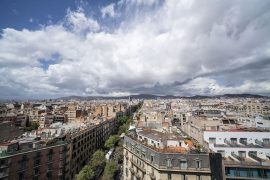
The hotel and industrial sectors softened the market's decline last...

“Science is alive and it’s part of culture. Science is...
In hospitals, besides managing health, they manage life and death...

Just as in the universe there are so many planets...
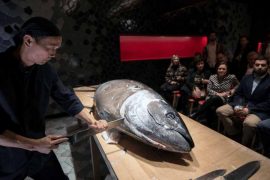
With constant innovation and a unique system of traceability and...

The company settled in the Baix Empordà manufactures up to...

Música clásica sobre la arena de la playa en dos...

The first session of the cycle on the regatta organized...
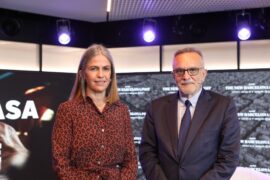
The hospital's managing director, Manel del Castillo, and the pharmaceutical...
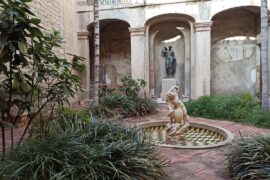
Generalitat y Ayuntamiento impulsarán dos equipamientos de 'Casa de les...
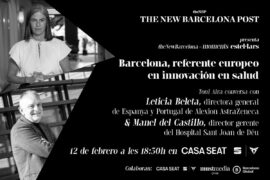
Leticia Beleta, director of Alexion Pharmaceuticals in Spain and Portugal,...
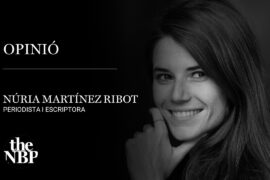
We all have a friend who never leaves the Gràcia...

Barcelona director opts for Best International Film with 'La sociedad...

The hotel and industrial sectors softened the market's decline last...
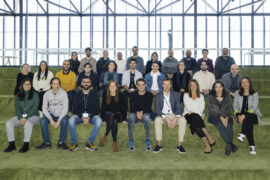
The technology company, with a workforce of 35 employees and...
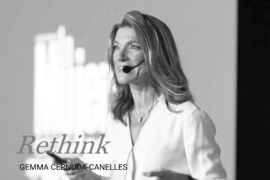
“The women of yesteryear were strong and had to fight...
[dropcap letter=”I”]
t’s the start of a new day in Barcelona. We leave behind a full year with lots of memories, especially the celebration of the 25 years of the Olympic Games, Barcelona’92. That event transformed Barcelona into the city we have now. It opened Barcelona to the world. Today we are reaping the benefits of that feat: the Barcelona Airport has reached record figures in excess of 47 million passengers. An intense year for the opening of new international connections. These openings, in turn, will pave the way towards new projects.
We start walking down the Rambles, the heart of the city, as it raises its shutters to welcome over 200,000 visitors who walk up and down this tree-lined street every day. We walk over the colourful Miro Mosaic that also wants to welcome the bags and suitcases that come from all over the world to visit this dynamic city. In the middle of this, there’s a small family taking a selfie to immortalize the moment when a wonderful holiday comes to an end.
THE MOBILE WORLD CONGRESS AND SANT JORDI, DIFFERENT WAYS TO EXPERIENCE THE CITY
The crowd lifts us forward and we find ourselves almost floating over panots, the attractive paving stones decorating many of Barcelona’s sidewalks. A group of Asian tourists in smart suits run past us to grab a taxi the Mobile World Congress. The 2017 edition exceeded all expectations with over 100,000 visitors. The MWC is one of the most popular events with the highest impact for Barcelona worldwide.
If you are lucky enough to be in the city on Saint Jordi’s Day you will enjoy the real essence of Catalan culture. On this day, the streets of Catalonia are filled with thousands of roses and books. It’s a once-in-a-lifetime experience. A day of celebration of love and friendship. On this day you will fall head over heels in love with Barcelona. The impact of this celebration was one of the arguments that UNESCO used to declare the 23rd of April as International Book Day.
Those who have breathed in this atmosphere are those who have made it possible for Barcelona to rank among the top 10 according to the World Best Cities 2018 report or, depending on the category, right behind Tokyo in second place.
The idyllic climate of Barcelona, one of the factors analyzed in this study, must be considered alongside all the colors that make up the puzzle of the Catalan capital. The myriad of colours from Parc Güell, Casa Batlló, the Sagrada Família, and the surroundings of Montjuïc, to the blue and red of Barcelona Football Club draw attention worldwide. These impressive monuments and totally iconic places make Barcelona an original, creative and unique city.
We accompany a group of youngsters to the imposing square of Plaça Sant Jaume, the political centre and administrative heart of Catalunya, where the City Hall and the Palace of the Government of Catalunya face each other. Interestingly, this is where the Roman forum was built, at the crossroads of the main thoroughfare of the Cardo and the Decomanus.
“The way that Barcelona has succeeded in integrating the different Gothic, Neoclassical and Renaissance styles of the buildings, giving the city a sense of historical continuity, is very impressive”
PIER 01, THE FIRST STONE OF THE HUB
Crossing Via Laietana, close to the waterfront, stands the house of La Llotja, the prelude to Palau de Mar, our final destination. Located in Plaça Pau Vila, the Palau de Mar is typical 19th century harbor architecture, built in response to the commercial demands of the time. It was never used as a commercial deposit, which was the main intention. During the Olympic games it had an administrative use and it ended up being the Office of the Department of Family and Social Welfare. A year later, the History Museum of Catalonia project began. At the moment it is the headquarters of the Museum and also of Pier01, known by some as The House of Startups.
A soft breeze opens our lungs to inspire the atmosphere of one of the most important harbours in Europe. The blend of blues and the taste of sea salt evokes the city’s idiosyncratic way of life. A demonstration of the conviction that collective determination means that everything is possible. Like the castellers who determinedly raise the enxaneta, the smallest child to crown the human castle.
Another demonstration of the power of collective force is the annual telethon broadcast on Catalan public television. La Marató on TV3, raises funds for scientific research into diseases which are currently incurable. This year’s edition managed to raise €7.2 million through hundreds of local events to support investigation and research into some of the most severely infectious diseases.
This conviction is also what led a group of entrepreneurs in 2011 to suggest to the then Mayor of Barcelona, Xavier Trias, the creation of what has ended up being one of the leading technological hubs in Europe: Barcelona Tech City (BTC).
THE POTENTIAL OF TECH ECOSYSTEM IN CATALONIA
Barcelona’s motivation to position itself at the highest places of the innovation league, competing with leading cities such as London, Berlin or Paris, is difficult to understand with an exclusively rational logic. Undeniably, a conjunction of factors has come together. You need to live this city to understand it.
And that’s why we are here. To understand how from the quiet wisdom and discretion, a project that exceeded all expectations has come true. Few could have imagined the exponential growth that the startup ecosystem has seen in the last few years years. To the right of the two rectangular structures that make up Palau de Mar is the entrance to Pier01, Barcelona Tech City headquarters, a digital hub that is home to a new generation of tech companies. The 11,000 sq. m. building houses a hundred startups and nearly a thousand entrepreneurs.

The Association, chaired by Miguel Vicente and directed by Miquel Martí (CEO), commemorated the first anniversary of its star project, Pier01, the place where we are now. Few project names have been as successful as this one. Pier, inasmuch as it is a gateway to the Catalan entrepreneurial ecosystem and one of the pieces that have helped to consolidate Barcelona as a technological hub in the international context. 01, which basically states that this is the first, so far, but not the last.
Barcelona generates business opportunities and scales positions benchmarking the city at the forefront of the top five European hubs in terms of number of startups, just behind London, Berlin, Paris and Dublin. This year, Barcelona ranks fourth in the category of capital invested in startups, according to The State of European Tech report issued by the international technology investment company, Atomico.
Barcelona startups raised $722 million, about €600 million: London, Berlin and Paris were the only capitals that outperformed the Catalan city. This figure shows how local initiatives have relentlessly achieved international recognition. This figure does not include other success stories of Catalan startups throughout 2017, such as the acquisition of Social Point S.L. for €230 million by Take-two Interactive Software last February.
“About 30 Catalan startups have each raised more than €2M in investment in 2017”

As you enter Pier 01, apart from carefully and exquisitely designed and original spaces, worked out to the nearest millimetre, you also realise that these are spaces full of dreams, like the ones you pack into a small suitcase before going on a journey.
Barcelona Tech City has managed to concentrate the Catalan technological potential into one single space with great complementary projects. This is a clear example of public-private collaboration which includes the Startup Catalonia team of ACCIO (Catalan Government) and some of the programs of Mobile World Capital Barcelona. At the same time, BTC has combined to perfection the presence of cutting edge startups like Holaluz, Byhours and Tiendeo with innovative projects of large well-established corporations wanting to have a foot in Pier01. We are talking about Innovahub promoted by Gas Natural Fenosa, Payment Innovation Hub promoted by CaixaBank, Global Payments, Samsung, Visa and Arval, or Metropolis: Lab Barcelona promoted by SEAT. The need to innovate, diversify and be at the cutting edge has led to powerful agreements between corporations and startups in an attempt to find something intrinsic in their DNA: i.e. cooperating in order to grow faster and do new business.
Barcelona is enjoying an unusually sweet spot at the moment. Barcelona is a magnet for new projects and captures investment. The city attracts local and international talent. And it arouses the interest of founders who consider Barcelona the third most attractive European city to move to, according to the Startup Ecosystem Overview 2018 report issued by the Mobile World Capital Barcelona.
We sit down in the recently opened Cantina cafe with Miquel Martí, and we hear his future plans on how to climb the ladder of this league of cities. We analize what we have achieved and, also, what we intend to achieve, because the story of Barcelona is a story in the making, a work in progress. These fascinating discussions could last forever and then you realize that perhaps it is time for you to slow down, stop and think about everything we have achieved and appreciate it for what it’s worth. Perhaps, we need to have faith and truly believe what the rankings clearly indicate. And then, slowly but surely, continue reassured in the belief that we must be on the right track towards building a fully-fledged Catalan ecosystem of international renown.
[dropcap letter=”I”]
t’s the start of a new day in Barcelona. We leave behind a full year with lots of memories, especially the celebration of the 25 years of the Olympic Games, Barcelona’92. That event transformed Barcelona into the city we have now. It opened Barcelona to the world. Today we are reaping the benefits of that feat: the Barcelona Airport has reached record figures in excess of 47 million passengers. An intense year for the opening of new international connections. These openings, in turn, will pave the way towards new projects.
We start walking down the Rambles, the heart of the city, as it raises its shutters to welcome over 200,000 visitors who walk up and down this tree-lined street every day. We walk over the colourful Miro Mosaic that also wants to welcome the bags and suitcases that come from all over the world to visit this dynamic city. In the middle of this, there’s a small family taking a selfie to immortalize the moment when a wonderful holiday comes to an end.
THE MOBILE WORLD CONGRESS AND SANT JORDI, DIFFERENT WAYS TO EXPERIENCE THE CITY
The crowd lifts us forward and we find ourselves almost floating over panots, the attractive paving stones decorating many of Barcelona’s sidewalks. A group of Asian tourists in smart suits run past us to grab a taxi the Mobile World Congress. The 2017 edition exceeded all expectations with over 100,000 visitors. The MWC is one of the most popular events with the highest impact for Barcelona worldwide.
If you are lucky enough to be in the city on Saint Jordi’s Day you will enjoy the real essence of Catalan culture. On this day, the streets of Catalonia are filled with thousands of roses and books. It’s a once-in-a-lifetime experience. A day of celebration of love and friendship. On this day you will fall head over heels in love with Barcelona. The impact of this celebration was one of the arguments that UNESCO used to declare the 23rd of April as International Book Day.
Those who have breathed in this atmosphere are those who have made it possible for Barcelona to rank among the top 10 according to the World Best Cities 2018 report or, depending on the category, right behind Tokyo in second place.
The idyllic climate of Barcelona, one of the factors analyzed in this study, must be considered alongside all the colors that make up the puzzle of the Catalan capital. The myriad of colours from Parc Güell, Casa Batlló, the Sagrada Família, and the surroundings of Montjuïc, to the blue and red of Barcelona Football Club draw attention worldwide. These impressive monuments and totally iconic places make Barcelona an original, creative and unique city.
We accompany a group of youngsters to the imposing square of Plaça Sant Jaume, the political centre and administrative heart of Catalunya, where the City Hall and the Palace of the Government of Catalunya face each other. Interestingly, this is where the Roman forum was built, at the crossroads of the main thoroughfare of the Cardo and the Decomanus.
“The way that Barcelona has succeeded in integrating the different Gothic, Neoclassical and Renaissance styles of the buildings, giving the city a sense of historical continuity, is very impressive”
PIER 01, THE FIRST STONE OF THE HUB
Crossing Via Laietana, close to the waterfront, stands the house of La Llotja, the prelude to Palau de Mar, our final destination. Located in Plaça Pau Vila, the Palau de Mar is typical 19th century harbor architecture, built in response to the commercial demands of the time. It was never used as a commercial deposit, which was the main intention. During the Olympic games it had an administrative use and it ended up being the Office of the Department of Family and Social Welfare. A year later, the History Museum of Catalonia project began. At the moment it is the headquarters of the Museum and also of Pier01, known by some as The House of Startups.
A soft breeze opens our lungs to inspire the atmosphere of one of the most important harbours in Europe. The blend of blues and the taste of sea salt evokes the city’s idiosyncratic way of life. A demonstration of the conviction that collective determination means that everything is possible. Like the castellers who determinedly raise the enxaneta, the smallest child to crown the human castle.
Another demonstration of the power of collective force is the annual telethon broadcast on Catalan public television. La Marató on TV3, raises funds for scientific research into diseases which are currently incurable. This year’s edition managed to raise €7.2 million through hundreds of local events to support investigation and research into some of the most severely infectious diseases.
This conviction is also what led a group of entrepreneurs in 2011 to suggest to the then Mayor of Barcelona, Xavier Trias, the creation of what has ended up being one of the leading technological hubs in Europe: Barcelona Tech City (BTC).
THE POTENTIAL OF TECH ECOSYSTEM IN CATALONIA
Barcelona’s motivation to position itself at the highest places of the innovation league, competing with leading cities such as London, Berlin or Paris, is difficult to understand with an exclusively rational logic. Undeniably, a conjunction of factors has come together. You need to live this city to understand it.
And that’s why we are here. To understand how from the quiet wisdom and discretion, a project that exceeded all expectations has come true. Few could have imagined the exponential growth that the startup ecosystem has seen in the last few years years. To the right of the two rectangular structures that make up Palau de Mar is the entrance to Pier01, Barcelona Tech City headquarters, a digital hub that is home to a new generation of tech companies. The 11,000 sq. m. building houses a hundred startups and nearly a thousand entrepreneurs.

The Association, chaired by Miguel Vicente and directed by Miquel Martí (CEO), commemorated the first anniversary of its star project, Pier01, the place where we are now. Few project names have been as successful as this one. Pier, inasmuch as it is a gateway to the Catalan entrepreneurial ecosystem and one of the pieces that have helped to consolidate Barcelona as a technological hub in the international context. 01, which basically states that this is the first, so far, but not the last.
Barcelona generates business opportunities and scales positions benchmarking the city at the forefront of the top five European hubs in terms of number of startups, just behind London, Berlin, Paris and Dublin. This year, Barcelona ranks fourth in the category of capital invested in startups, according to The State of European Tech report issued by the international technology investment company, Atomico.
Barcelona startups raised $722 million, about €600 million: London, Berlin and Paris were the only capitals that outperformed the Catalan city. This figure shows how local initiatives have relentlessly achieved international recognition. This figure does not include other success stories of Catalan startups throughout 2017, such as the acquisition of Social Point S.L. for €230 million by Take-two Interactive Software last February.
“About 30 Catalan startups have each raised more than €2M in investment in 2017”

As you enter Pier 01, apart from carefully and exquisitely designed and original spaces, worked out to the nearest millimetre, you also realise that these are spaces full of dreams, like the ones you pack into a small suitcase before going on a journey.
Barcelona Tech City has managed to concentrate the Catalan technological potential into one single space with great complementary projects. This is a clear example of public-private collaboration which includes the Startup Catalonia team of ACCIO (Catalan Government) and some of the programs of Mobile World Capital Barcelona. At the same time, BTC has combined to perfection the presence of cutting edge startups like Holaluz, Byhours and Tiendeo with innovative projects of large well-established corporations wanting to have a foot in Pier01. We are talking about Innovahub promoted by Gas Natural Fenosa, Payment Innovation Hub promoted by CaixaBank, Global Payments, Samsung, Visa and Arval, or Metropolis: Lab Barcelona promoted by SEAT. The need to innovate, diversify and be at the cutting edge has led to powerful agreements between corporations and startups in an attempt to find something intrinsic in their DNA: i.e. cooperating in order to grow faster and do new business.
Barcelona is enjoying an unusually sweet spot at the moment. Barcelona is a magnet for new projects and captures investment. The city attracts local and international talent. And it arouses the interest of founders who consider Barcelona the third most attractive European city to move to, according to the Startup Ecosystem Overview 2018 report issued by the Mobile World Capital Barcelona.
We sit down in the recently opened Cantina cafe with Miquel Martí, and we hear his future plans on how to climb the ladder of this league of cities. We analize what we have achieved and, also, what we intend to achieve, because the story of Barcelona is a story in the making, a work in progress. These fascinating discussions could last forever and then you realize that perhaps it is time for you to slow down, stop and think about everything we have achieved and appreciate it for what it’s worth. Perhaps, we need to have faith and truly believe what the rankings clearly indicate. And then, slowly but surely, continue reassured in the belief that we must be on the right track towards building a fully-fledged Catalan ecosystem of international renown.
